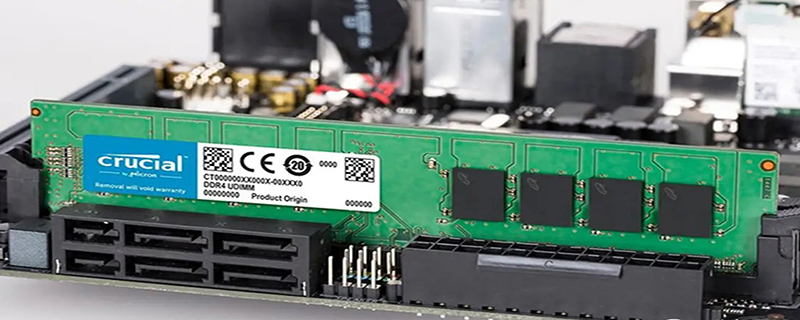Home >Common Problem >Two important indicators used to describe the quality of memory performance are
Two important indicators used to describe the quality of memory performance are
- (*-*)浩Original
- 2019-10-23 15:42:4212168browse
Two important indicators used to describe the performance of memory are storage capacity and access time. These are two important indicators for measuring memory performance, which is also known as the size of the memory (256M/512M/ 1G/2G) and memory speed (133/266/333/400/533/667/800, etc.).

Memory is one of the important components in the computer. It is the bridge that communicates with the CPU. All programs in the computer run in the memory, so the performance of the memory has a great impact on the computer. (Recommended learning: web front-end video tutorial)
Memory is also called internal memory and main memory. Its function is to temporarily store operation data in the CPU. , as well as data exchanged with external storage such as hard drives.
As long as the computer is running, the CPU will transfer the data that needs to be calculated into the memory for calculation. When the calculation is completed, the CPU will transmit the results. The operation of the memory also determines the stable operation of the computer. Memory is composed of memory chips, circuit boards, gold fingers and other parts.
The type of memory and operating frequency will have a certain impact on performance, but in comparison, capacity has a greater impact. Under the same conditions with other configurations, the larger the memory, the higher the performance of the machine. The price of memory has dropped slightly. Around 2011, computer memory configurations have become larger and larger, generally above 1G, and there are also computers with 2G, 4G, and 6G memory.
How memory works. From a functional perspective, we can think of memory as the bridge between the memory controller and the CPU, and the memory is equivalent to a "warehouse". Obviously, the capacity of the memory determines the size of the "warehouse", and the speed of the memory determines the width of the "bridge". Both are indispensable. This is what we often call "memory capacity" and "memory speed".
The calculation method of memory bandwidth is not complicated. You can follow the following calculation formula: bandwidth = bus width × bus frequency × number of data packets exchanged in one clock cycle.
It is obvious that each of these multiplier factors will have a huge impact on the final memory bandwidth. In the PCMark Vantage test, you can see that the performance of 2GB and 4GB DDR3-1600 memory is relatively close. The 2GB memory only lags behind when starting some office software. After all, half the capacity is missing, so it is more difficult to run.
In the 3DmarkVantage game performance test, we can see that under the Win7 system, the performance difference between 2GB and 4GB memory is not very big, and the results are very close. At the same time, in the WIN7 environment, the difference between 2GB memory and 4GB memory is very small, and in some cases there is even no difference. At this time, if you want to improve memory performance, it is not very meaningful to just think about upgrading the capacity.
The above is the detailed content of Two important indicators used to describe the quality of memory performance are. For more information, please follow other related articles on the PHP Chinese website!

